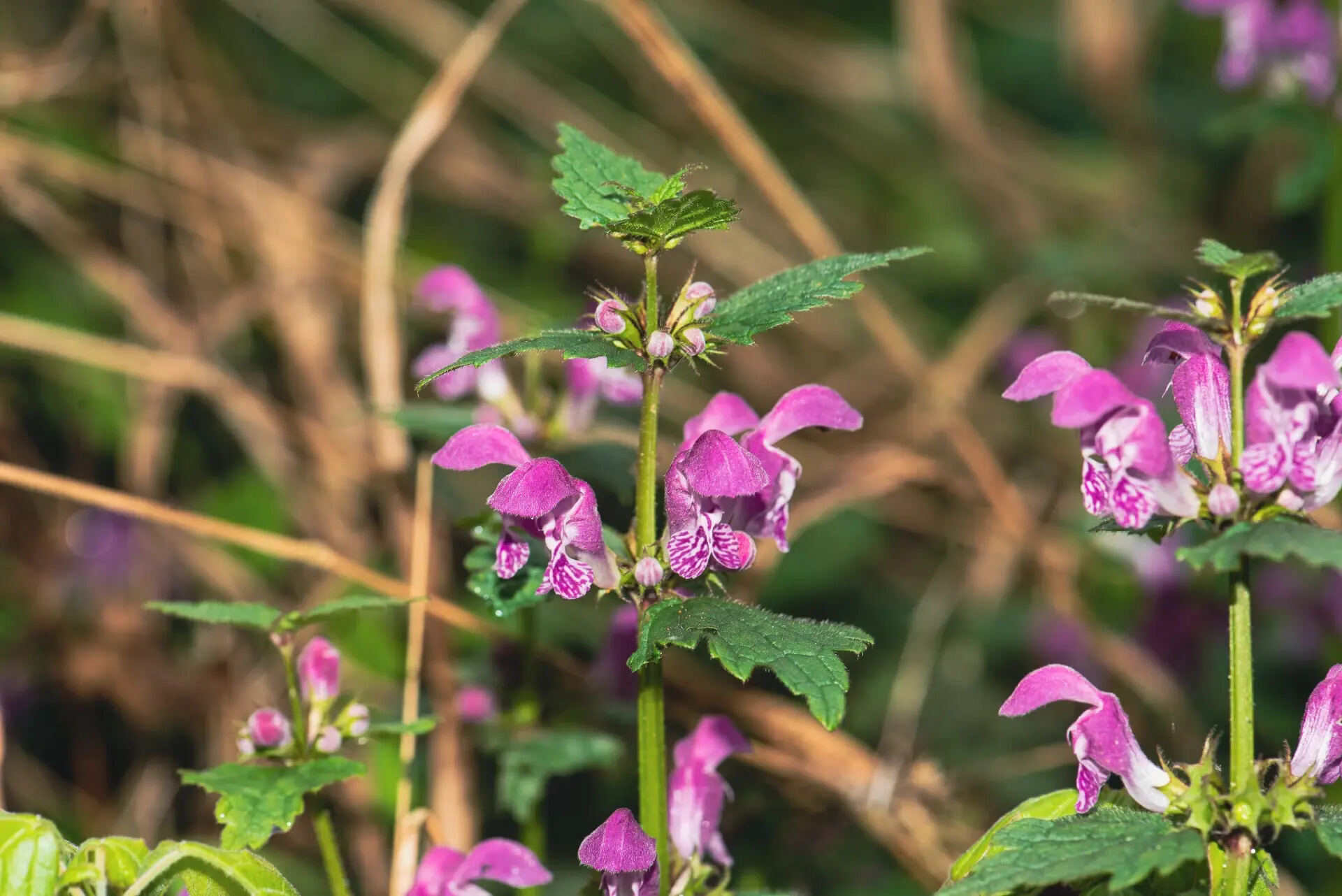
Spotted deadnettle, also known as Lamium maculatum, is a fascinating plant that often surprises gardeners and nature enthusiasts alike. This perennial ground cover, native to Europe and Asia, is cherished for its vibrant foliage and delicate flowers. But what makes it truly special? Spotted deadnettle thrives in shady areas where many plants struggle, making it a go-to choice for those tricky garden spots. Its leaves, often marked with silver or white patterns, add a splash of brightness to darker corners. Plus, it’s deer-resistant and low-maintenance, appealing to both novice and seasoned gardeners. Ready to learn more? Dive into these 33 intriguing facts about spotted deadnettle!
What is Spotted Deadnettle?
Spotted deadnettle, also known as Lamium maculatum, is a perennial ground cover plant. It’s popular for its attractive foliage and colorful flowers. Here are some fascinating facts about this unique plant.
-
Spotted deadnettle belongs to the mint family. This means it shares some characteristics with mint, such as square stems and opposite leaves.
-
The plant is native to Europe and Asia. It thrives in woodlands and shaded areas.
-
It’s called “deadnettle” because it doesn’t sting. Unlike true nettles, its leaves are harmless to touch.
Appearance and Growth
Spotted deadnettle is known for its distinctive look and growth habits. Let's explore some interesting aspects of its appearance and how it grows.
-
Leaves are heart-shaped and variegated. They often have silver or white markings, making them stand out.
-
Flowers come in various colors. You can find them in shades of pink, purple, and white.
-
It grows low to the ground. Typically, it reaches about 6-12 inches in height.
-
Spreads through creeping stems. These stems root at the nodes, helping the plant cover ground quickly.
Ideal Growing Conditions
Understanding the best conditions for growing spotted deadnettle can help gardeners cultivate it successfully.
-
Prefers partial to full shade. It thrives in areas with limited sunlight.
-
Likes moist, well-drained soil. Consistent moisture helps it grow well, but it doesn’t like soggy conditions.
-
Tolerates a range of soil types. From sandy to clay soils, it adapts well.
-
Hardy in USDA zones 3-8. This makes it suitable for various climates.
Benefits and Uses
Spotted deadnettle isn’t just pretty; it has practical benefits and uses in the garden.
-
Excellent ground cover. It helps suppress weeds by covering the soil.
-
Erosion control. Its dense growth helps prevent soil erosion on slopes.
-
Attracts pollinators. Bees and butterflies love its flowers.
-
Deer-resistant. Deer usually avoid eating it, making it a good choice for areas with deer problems.
Care and Maintenance
Taking care of spotted deadnettle is relatively easy, but there are a few things to keep in mind.
-
Prune to control growth. Trim back after flowering to keep it tidy.
-
Divide every few years. This helps rejuvenate the plant and prevent overcrowding.
-
Watch for pests and diseases. While generally hardy, it can sometimes suffer from aphids or powdery mildew.
-
Mulch to retain moisture. A layer of mulch helps keep the soil moist and cool.
Interesting Varieties
There are several varieties of spotted deadnettle, each with unique features.
-
‘Beacon Silver’. Known for its silver leaves and pink flowers.
-
‘White Nancy’. Features white flowers and silvery foliage.
-
‘Purple Dragon’. Boasts deep purple flowers and dark green leaves.
-
‘Pink Pewter’. Has soft pink flowers and silvery-green leaves.
Fun Facts
Here are some fun and lesser-known facts about spotted deadnettle.
-
Used in traditional medicine. Some cultures use it for its supposed healing properties.
-
Edible leaves. Young leaves can be eaten raw or cooked, though they are not commonly used in modern cuisine.
-
Named for its spotted leaves. The “spotted” part of its name comes from the markings on its leaves.
-
Can be invasive. In some areas, it can spread aggressively if not managed.
Environmental Impact
Spotted deadnettle has both positive and negative impacts on the environment.
-
Provides habitat for insects. Its dense foliage offers shelter for various small creatures.
-
Can outcompete native plants. In some regions, it may displace local flora.
-
Helps improve soil health. Its roots help aerate the soil and add organic matter.
Seasonal Behavior
Understanding how spotted deadnettle behaves throughout the year can help in planning garden activities.
-
Blooms from spring to early summer. This is when it’s most vibrant and colorful.
-
Goes dormant in winter. In colder climates, it may die back but will regrow in spring.
-
Can be evergreen in mild climates. In areas with mild winters, it may retain its leaves year-round.
Final Thoughts on Spotted Deadnettle
Spotted deadnettle isn't just a pretty plant. It's a hardy, versatile addition to any garden. With its vibrant flowers and unique foliage, it can brighten up shady spots where other plants struggle. Plus, it's low-maintenance, making it perfect for both novice and experienced gardeners.
This plant also offers ecological benefits, attracting pollinators like bees and butterflies. Its ground-covering nature helps prevent soil erosion. Whether you're looking to add color, support local wildlife, or simply enjoy a resilient plant, spotted deadnettle is a great choice.
Remember, it's not just about aesthetics. The practical benefits make it a valuable addition to any garden. So, next time you're planning your garden, consider giving spotted deadnettle a spot. You'll enjoy its beauty and the benefits it brings to your outdoor space.
Was this page helpful?
Our commitment to delivering trustworthy and engaging content is at the heart of what we do. Each fact on our site is contributed by real users like you, bringing a wealth of diverse insights and information. To ensure the highest standards of accuracy and reliability, our dedicated editors meticulously review each submission. This process guarantees that the facts we share are not only fascinating but also credible. Trust in our commitment to quality and authenticity as you explore and learn with us.
